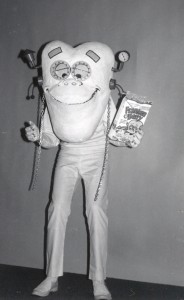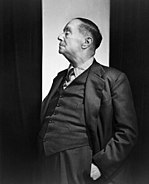[Bill gave me permission to post his reaction to the John Carter movie, part of an exchange with Bjo Trimble. It’s helpful to bear in mind Bjo’s first sentence about Bill liking the movie. The promotional campaign, not so much…]
Bjo: Good to hear that you liked John Carter. I hate the trailers, don’t like the look of the hero, and don’t care for the derivative monsters and things. But that’s all from the trailers. Maybe I’ll go see it.
Bill Warren: The entire promotion campaign for this movie was moronic. The first big mistake was in not promoting it at the last two Comic-Cons; they chose to promote it only at an all-Disney proprietary convention. Next, they dropped “…of Mars” from the title because focus groups told them no woman would see a movie with the word “Mars” in the title; they were going by the utter disaster of their own Mars Needs Moms. They decided to do nothing whatsoever to connect it to the Tarzan lore, and initially didn’t even feature the name “Edgar Rice Burroughs” in their ads and trailers. Those trailers emphasized the wrong stuff; they had little sense of adventure, of thrills, of the wonders of visiting another world, and nothing whatsoever of the occasional humor; even the one shot of Woola the calot isn’t amusing, but he’s funny in the film. They said nothing about the fact that the Mars books were tremendously influential on Star Wars and especially Avatar; weird that they did not try to hook their movie to what is nothing less than the most successful movie of all time. James Cameron himself has cited the Barsoom books as one of his main inspirations; so has Lucas. The current promotional campaign is different (because it’s being run by completely different people than those who handled the first go-round)–and connects the movie to Star Wars, Avatar, Ray Bradbury, etc., even mentioning Robert A. Heinlein and Arthur C. Clarke as being among those who loved the book. But it’s probably a day late and two hundred million dollars short.
The movie has some problems — but they’re mostly in pacing, not in how the book(s) has/have been adapted (the Therns, prominent here, first showed up in the 2nd Barsoom novel). It’s immense, a gigantic epic — there’s a scene of a few thousand Tharks shouting John Carter’s Barsoomian name. And a wedding scene in Helium that is bigger than any other wedding scene, ever; it’s bigger than Cleopatra’s entrance to Rome in Cleopatra (the one with Liz). Dejah Thoris doesn’t really need all that much rescuing, and is a brilliant scientist on her own–as well as tough as a buzz saw. The relationship between Carter and Tars Tarkas, and between Tars Tarkas and Sola, are exactly as in the book. There’s a bit more humor than in Burroughs, who didn’t use it often (though I love the “Chessmen of Mars Chapter” ‘Ghek Plays Pranks’), and quite a bit more to Carter’s character. The special effects are, of course, perfect; this much money had to have that result. We can even believe Carter leaping around like a flea (though it takes him a bit to learn to do that). The movie is very well cast, especially Lynn Collins (Dejah Thoris), Mark Strong (the main Thern) and James Purefoy (in briefly as Kantos Kan, but terrific, very amusing, very Errol Flynnish. He was Mark Antony in the HBO series “Rome.”)


 Bill Warren recommends
Bill Warren recommends 

 “Forry always said H.G. Wells had a high-pitched voice,” writes Bill Warren. “I never would have dreamed it was this high-pitched.”
“Forry always said H.G. Wells had a high-pitched voice,” writes Bill Warren. “I never would have dreamed it was this high-pitched.” Republic Pictures, historic home of sci-fi serials and B-movie cowboys like Gene Autry and Roy Rogers, celebrated its 75th anniversary on September 25. In the meantime the former Republic Studios has become the
Republic Pictures, historic home of sci-fi serials and B-movie cowboys like Gene Autry and Roy Rogers, celebrated its 75th anniversary on September 25. In the meantime the former Republic Studios has become the 